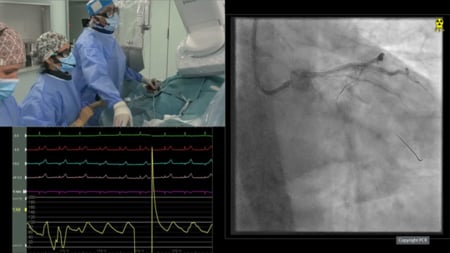21 Oct 2025
Calcified coronary lesions
The PCR Textbook
This freshly updated chapter extensively describes percutaneous tools and techniques to assess and treat challenging calcified lesions.
Summary
Heavily calcified vessels represent a challenge for percutaneous coronary intervention (PCI), as they might be associated with stent delivery failure and suboptimal deployment. The mechanisms of vascular calcification are now recognised as complex and highly regulated processes that involve activation of cellular signalling pathways, circulating inhibitors of calcification, genetic factors, and hormones[1]. To date there are no established interventions to prevent coronary calcification. There are, however, some therapeutic tools which enable PCI in calcified vessels, and these are the focus of this chapter.
Mechanical debulking of atherosclerotic plaques with rotational atherectomy prior to stent placement was originally proposed as a viable strategy to allow PCI in heavily calcified lesions and other challenging lesion settings such as ostial stenosis, diffusely diseased vessels, and chronic total occlusion. Clinical trials have failed to show an improved mortality or even a reduced rate of repeat target lesion revascularisation with mechanical debulking over conventional PCI, thus, in the past, limiting the widespread use of this technique. DES have, however, significantly reduced clinical restenosis (to less than 10% in most cases) and have hence expanded the indication for PCI to lesions and anatomical settings previously not attempted. As a result, there has been a resurgence of interest in plaque modifying tools over the last 5 to 10 years, as well as recent development of new technologies and improvements to older technologies.
Contemporary single-centre registries demonstrate a favourable clinical outcome and low repeat revascularisation rates, even with heavily calcified lesions, after adequate plaque modification. This, together with an ageing population demographic, has resulted in increased PCI in heavily calcified coronary lesions using tools no longer seen as for debulking but rather as tools to enable optimal DES delivery and deployment in extremely challenging lesions.
Authors
Farrel Hellig, Pieter Van Wyk, Emanuele Barbato, Shaheen Pandie



